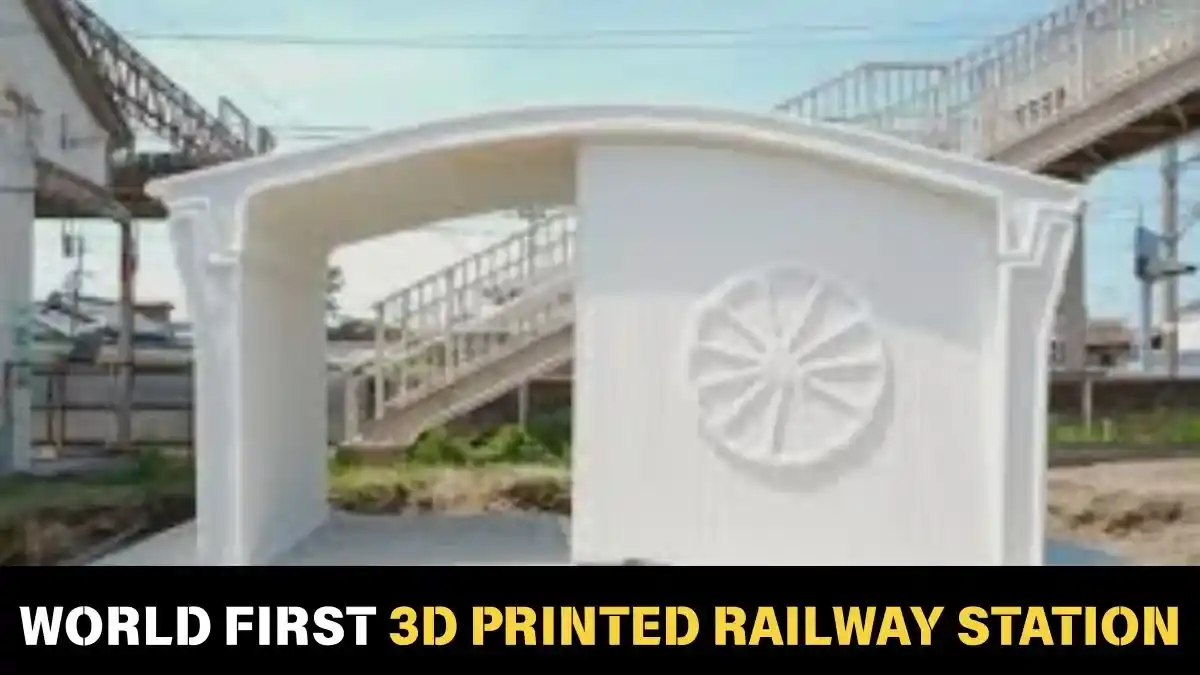Table of Contents
Hatsushima Station – World First 3D Printed Railway Station
In today’s modern era, we are witnessing a remarkable achievement in engineering as the city of Arita in Japan has unveiled the World First 3D Printed Railway Station, called Hatsushima Station in Japan.
This station was constructed in just 6 hours, replacing the wooden structure originally built in 1948.
Operated by West Japan Railway Company and built by Serendix, the station’s components were entirely manufactured in a factory located in Kumamoto Prefecture, Kashu, using 3D printing technology.
Understanding 3D Printing Technology
3D printing technology is also known as Additive Manufacturing (AM). It is a computer-controlled process used to create objects layer by layer.
In this process, materials like plastic, composite, metal, and biomaterials are used to build complex structures with minimal waste.
Advantages of 3D Printing Technology
- This technology makes it easy to enable complex and customized designs.
- It helps reduce both material waste and production costs.
- This technology is used in industries like healthcare, automotive, and confectionery.
Know More: India Longest and Largest Tunnel
How the 3D Printed Railway Station Was Built
The construction of the Hatsushima railway station began with Computer-Aided Design (CAD) software, where the station’s blueprint was first created and saved in formats such as STL (Stereolithography). The process involved several key steps:
Slicing – In this step, the design was divided into thousands of horizontal layers using slicing software.
Printing – A 3D printer then added material layer by layer to form each component.
Finishing – The printed parts went through curing, sanding, or painting to give them a polished look.
All components were pre-manufactured in a factory, and these parts were assembled on-site in just 6 hours, showcasing the speed and efficiency of 3D printing.

Types of 3D Printing Technologies Used
Several technologies and processes were used in the construction:
- Fused Deposition Modeling (FDM): This method builds objects by extruding melted thermoplastic filament.
- Selective Laser Sintering (SLS): Uses lasers to fuse plastic or metal powders into solid structures.
- Direct Metal Laser Sintering (DMLS): Creates durable metal components, often used in aerospace and medical applications.
- Material Jetting: Utilizes photopolymer droplets that are hardened using UV light for detailed prototypes.
The Future of 3D Printing in Infrastructure
- These printers can create large components in a single print.
- The development of stronger and more durable materials is possible.
- With 3D printing technology, developing countries can tackle housing and infrastructure shortages effectively.

Anil Kumar – Founder & Editor-in-Chief
I’m Anil Kumar, the driving force behind All GK Questions, a platform dedicated to making current affairs and general knowledge accessible, accurate, and engaging for all. With years of experience in educational content creation, I combine my passion for teaching with proven expertise in crafting exam-focused resources tailored to students and competitive exam aspirants. Under my leadership, the platform delivers well-researched, up-to-date, and reliable information designed to empower learners with the knowledge they need to succeed.




